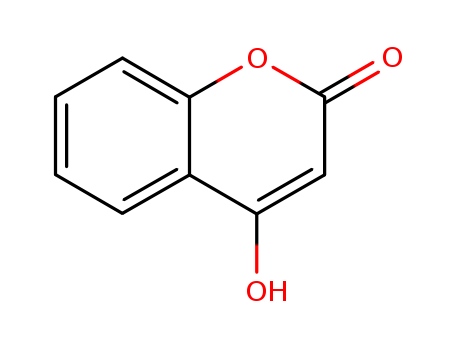10.1016/j.tet.2012.05.112
The research focuses on the efficient and straightforward synthesis of functionalized furo[3,2-c]coumarins through a one-pot oxidative pseudo three-component condensation reaction. The reactants involved in this green chemistry approach include aldehydes, 4-hydroxycoumarin, and a mixture of I2 and K2S2O8 in the presence of Na2CO3, which serves as an oxidative reagent. The synthesis takes place in poly(ethylene glycol) (PEG), a non-toxic, recoverable solvent. The synthesized furo[3,2-c]coumarins were characterized using various analytical techniques, including X-ray single crystal structure analysis, IR and 1H-13C NMR spectroscopy, mass spectrometry, and elemental analysis, which confirmed the structure and purity of the compounds. The study also optimized reaction conditions to achieve good yields and explored the reusability of the oxidant and solvent, demonstrating their effectiveness over multiple cycles.
10.1016/j.tetasy.2014.04.008
The research focuses on the asymmetric synthesis of warfarin and its analogues using an environmentally friendly organocatalytic approach on water, without the need for organic co-solvents. The main experiment involves the asymmetric Michael addition of 4-hydroxycoumarin to a,b-unsaturated ketones, catalyzed by organic primary amines, with a particular emphasis on the use of enantiomerically pure (S,S)-diphenylethylenediamine. This catalyst was found to be effective in producing a series of pharmaceutically active compounds in good to excellent yields (73–98%) and with good enantioselectivities (up to 76% ee). The reactions were accelerated by ultrasound, and the protocol was scalable, leading to an efficient method for the 'solids on water' formation of the anticoagulant warfarin in both enantiomeric forms. The analyses used to assess the efficiency and selectivity of the reactions included HPLC analysis on a chiral phase to determine enantiomeric excess, as well as various spectroscopic techniques such as IR, NMR, and HRMS to characterize the synthesized compounds.
10.1080/00397910801929465
The study presents a convenient approach to the synthesis of dialkyl 5-oxo-1,2-dihydro-5H-chromeno[4,3-b]pyridine-2,3-dicarboxylates, which are compounds considered privileged scaffolds in synthetic and pharmacological research due to their potential pharmacological activities. The researchers focused on the chemical behavior of enaminocarbaldehydes derived from the coumarin moiety under intramolecular Wittig reaction conditions. Key chemicals used in the study include triphenylphosphine, dimethyl or diethyl acetylenedicarboxylates, and various enaminoaldehydes (1a–g), which are readily available by treating 4-hydroxycoumarin with different amines and then formylated under Vilsmeier-Haack reaction conditions. These chemicals served the purpose of facilitating the synthesis of the target compounds in good to high yields, expanding the scope of synthetic methods for creating biologically active ingredients and fluorescent dyes.
10.2478/s11696-010-0072-0
The research focuses on the synthesis and antibacterial evaluation of novel benzopyranopyridine derivatives derived from 2-amino-3-formylchromone. The study involves the reaction of enol lactones, such as 4-hydroxy-6-methyl-2H-pyran-2-one (triacetic acid lactone, TAL) and 4-hydroxycoumarin, with 2-amino-3-formylchromone under basic conditions to yield 3-acetoacetyl benzopyranopyridones and benzopyranopyridines. Further, a series of pyrazole derivatives were prepared by reacting 3-acetoacetyl benzopyranopyridones with various hydrazines. The synthesized compounds were characterized using spectral data, including infrared (IR) spectroscopy, proton nuclear magnetic resonance (1H NMR) spectroscopy, and mass spectrometry, along with elemental analysis. Their antibacterial activity was assessed against both Gram-positive and Gram-negative bacteria using the disc diffusion method, with chloramphenicol serving as a positive control. The experiments aimed to explore the potential of these condensed heterocyclic systems for exhibiting broad-spectrum biological activities, with a particular focus on antibacterial properties.



 Xn,
Xn, Xi
Xi


